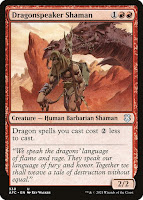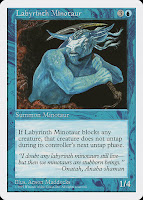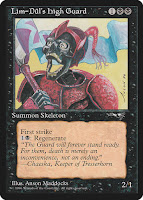 |
| Hapless Researcher card art |
2022 is nearly in the books; it is time to take a look back at the year in Magic.
Like last year, Wizards released a ton of product in 2022. I complained about that several times this year (that first link, Foiled Again and Overwhelmed, Glutted and Gutted). But, as I've said several times, nobody is forcing us to buy these things. So I am frustrated but must be better about being content with my collection. The new cards are fun but I don't *need* them.
The one nice thing about flooding the market is the potential for reprints dropping prices. Brothers' War is a good example- their retro artifacts reprinted a lot of cool cards that wound up dropping prices for a lot of them.
According to Card Market, here are the most-sold singles in 2022:
It is interesting that the top three are Commander staples and the other two are staples for red and blue, and have been around since the beginning. The card pool grows, but the fundamental cards remain.
Ignoring the humorous set Unfinity, the main pack-based releases this year were:
- Kamigawa: Neon Dynasty
- Streets of New Capenna
- D&D: Battle for Baldur's Gate (commander draft)
- Double Masters 2022 (compilation set)
- Dominaria United
- Brothers' War
- Jumpstart 2022 (compilation set)
I largely ignored the first two, collecting some staples but not playing much. Baldur's Gate disappointed me; I was hoping it would be more like the first D&D release, Adventures in the Forgotten Realms. Double Masters 2022 had some powerful cards (as it was intended to), but was really expensive. Dominaria United was fun. Brothers' War is decent. And Jumpstart 2022 looks great, like its predecessor.
They released four Warhammer-based commander decks and five starter commander decks. I ignored the former (though I've heard good things) and enjoyed the latter quite a bit. Again, the fundamental cards can be the most fun.
Personally, my year in Magic was centered on the inventorying (and subsequent analysis) of my collection that I did in August using the Dragonshield scanner. That took forever but was worth it (I think/hope). On the blog, I did the standard smattering of posts, looking at various things, to include rules, artists, formats, history, and 'farewells' to sets rotating out of standard. Other than the inventory, I enjoyed doing the creature types and prevalence analysis. And I tried adding some 'old frame' cards to my collection in addition to buying some of the new releases.
Here are my Arena stats for the year:
I wish they included how many of those games I played were test runs against the bot. I suspect half. That would then tell me my overall winning percentage against real opponents . . . under .500, to be sure, but hopefully not much less than that.It was a fun year, but overwhelming. I plan to treat next year differently; more on that tomorrow.
























































